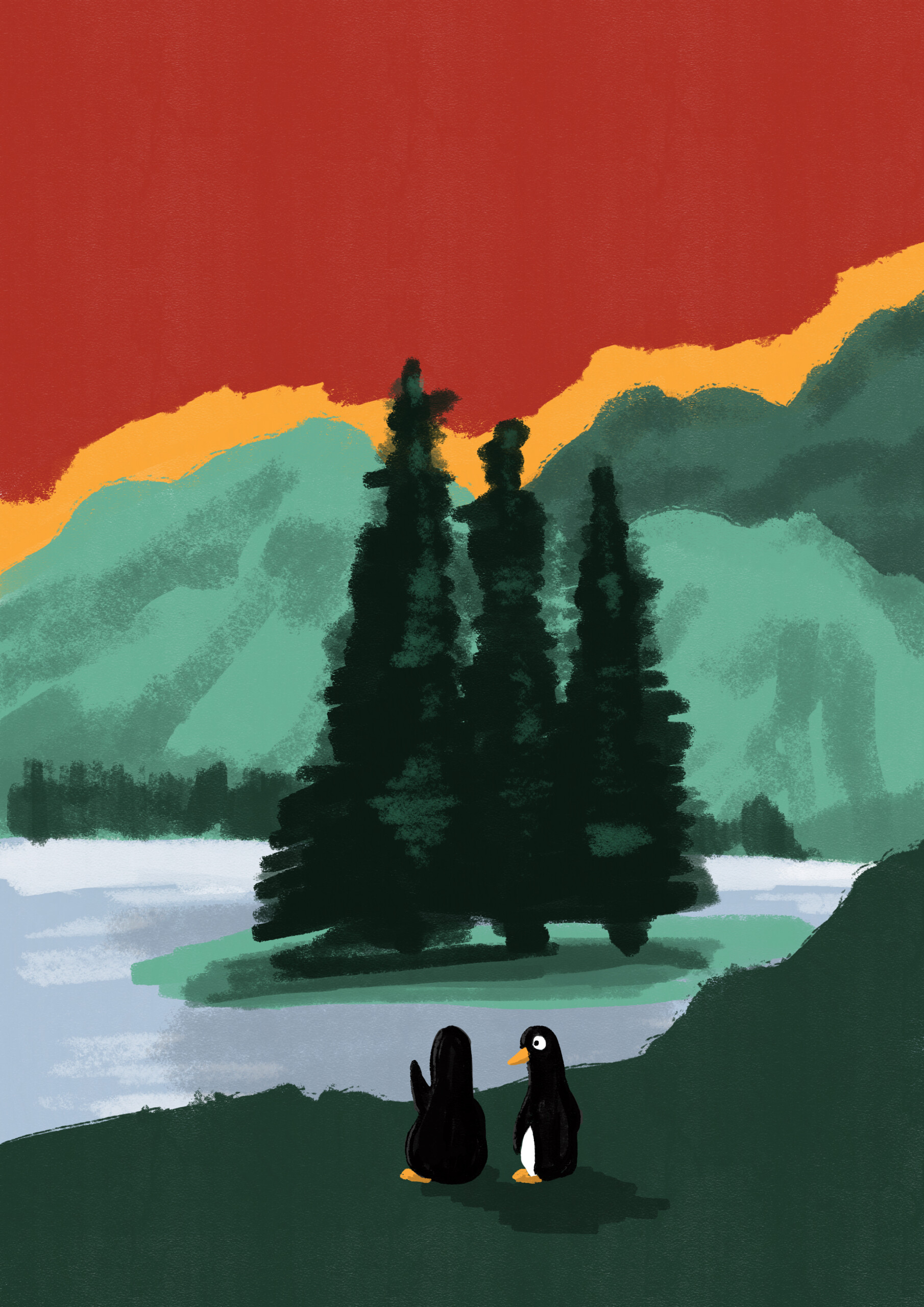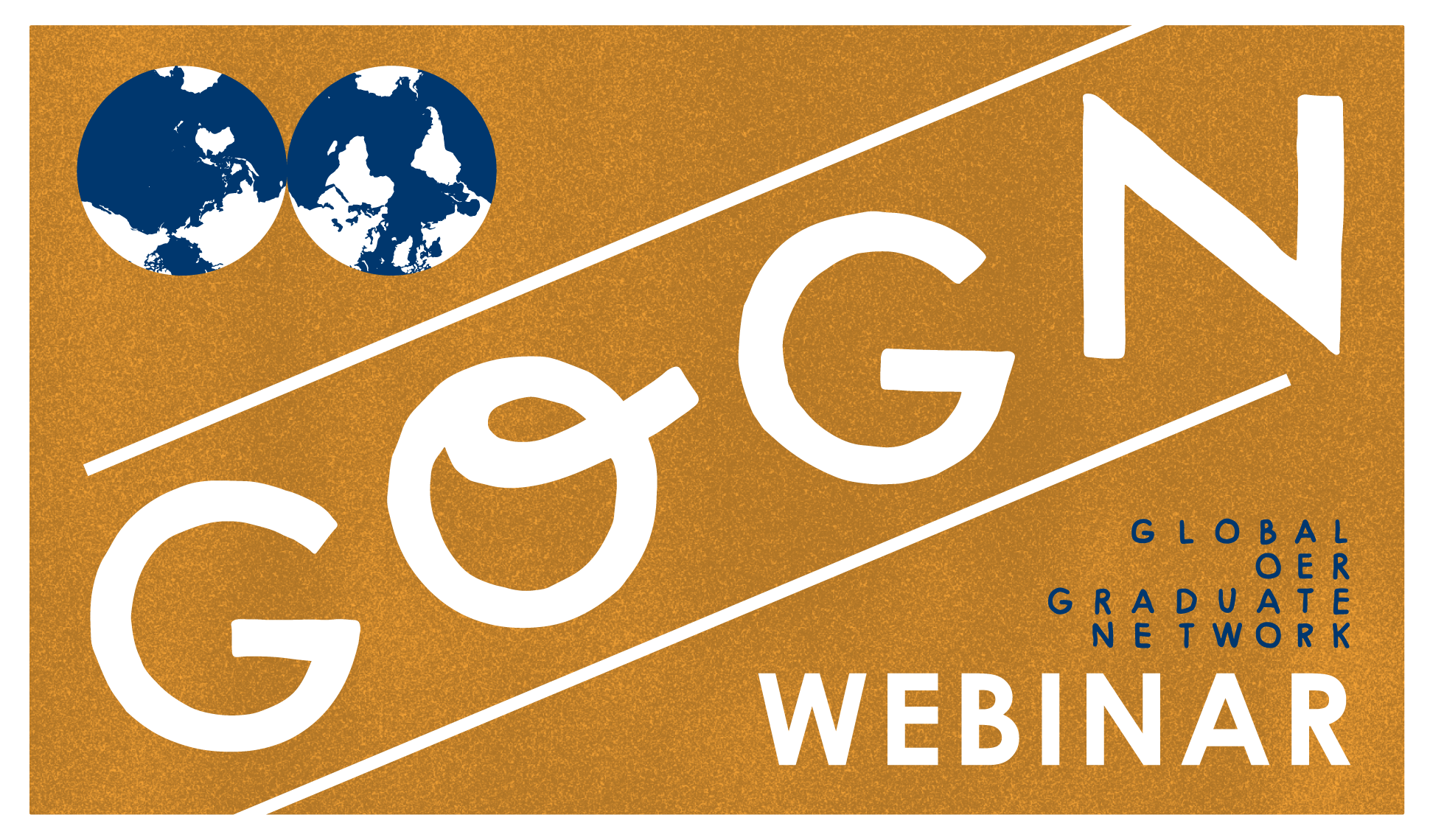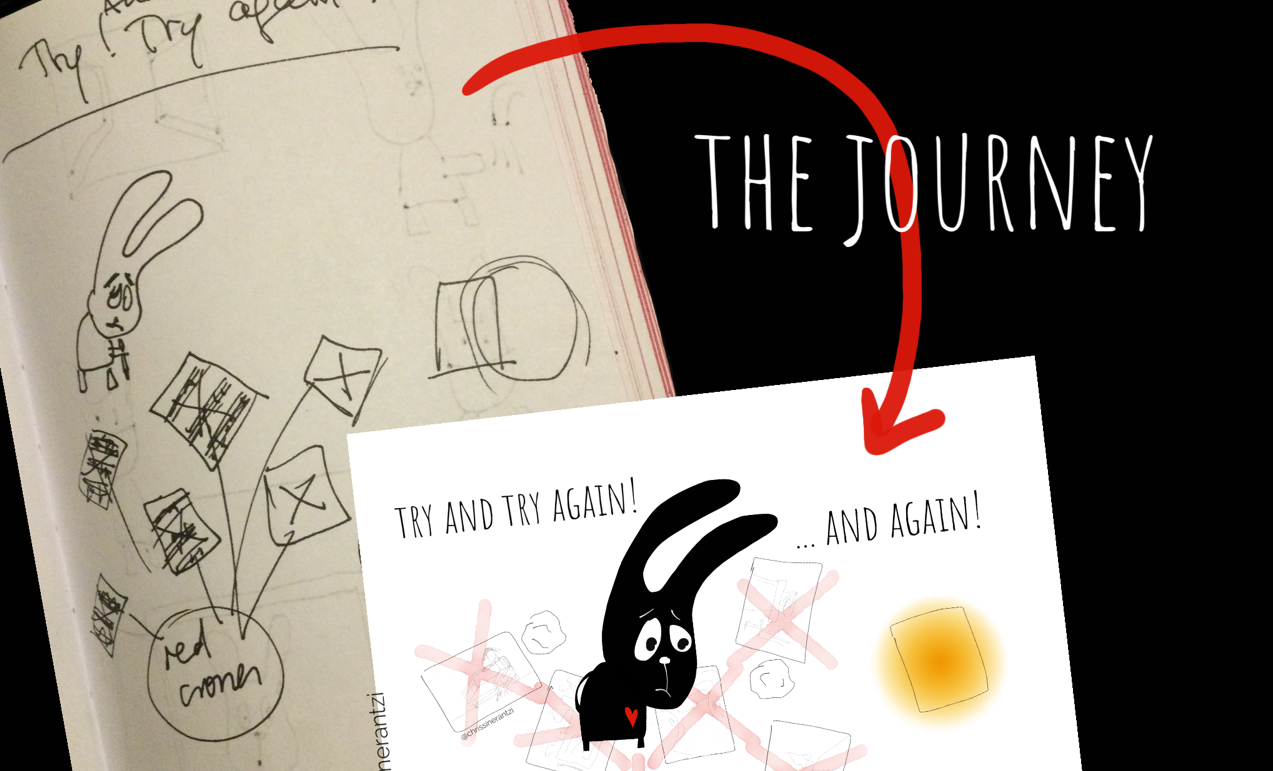
To illustrate or not to illustrate? Bryan mentoring Chrissi for the open picture book, a GOGN Fellowship project #gognpb
We found out that we both work in wooden garden sheds. We both use electric heaters. We both enjoy being in our sheds and creating new worlds there.
As it is a picture book we are creating as part of the GOGN Fellowship, we definitely have to illustrate our story. Picture books have text and illustrations that are interwoven, complement and extend each other. Sometimes picture books have only illustrations and I have seen a pictureless picture book as well (see https://youtu.be/7DV6FouCG_o) . Don’t know if there are many of those around.
Coming back to our project, I didn’t really think that I would be illustrating our story. Plan A was to hire an illustrator. There was no plan B. But then plan A could no longer happen. We had to be flexible and rethink our illustration strategy due to unforeseen circumstances. This meant I had to step up and play this role. It was exciting and daunting at the same time. I have always enjoyed drawing from when I was a little girl. I remember my mum used to give me drawing tasks which I enjoyed and helped me practise, practise, practise and develop my drawing skills. Apparently, I was drawing for hours back then. Soon, I started escaping my mum’s tasks and came up with my own little visual explorations and my curiosity and imagination started wandering and wondering. At a summer camp in Germany, I was baptised “Schreibmala” by Neptune himself, literally. I suspect there was a good reason for that. I loved to write and draw and still do. And the truth is that I have never been far away from the visual world, I am actually immersed into it. When I had my boys, I wanted to learn how to use watercolours and did a short course at college. I then started making colourful animal illustrations using watercolours acrylics and collage techniques for their bedroom which they loved and some of these developed into stories that I told them at night.
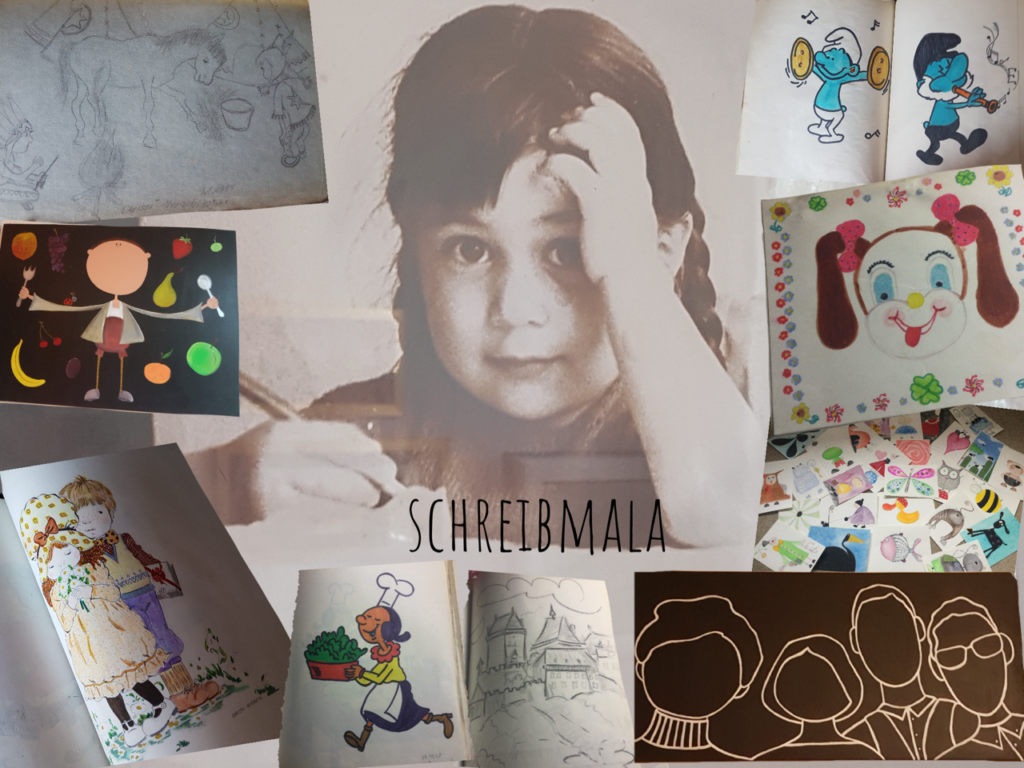
In this picture, you see me many years ago, and some of my work that has survived. The earliest work is when I was 9 years old, then there are some pieces from when I was 10 years old, 12 and then as a grown up. The photo that shows many illustrations together are the ones I made when my boys were little for their bedroom. Some larger pieces on plywood live on our walls and fill our home with personal memories. Thank you Bryan for helping me remember my journey into drawing and clearer see and better understand how I got here.
Also, my work as an academic developer is deeply rooted in visual practice, experimentation and play. I can’t do it any other way. I draw and I make and I play and I tell stories as an academic developer and model these practices so that my colleagues can consider these with their own students. So while these visual practices are part of being me as a natural creative and visual explorer and also a characteristic of my teaching and learning repertoire, and I love crafting I should add using a wide range of materials, illustrating a proper book for the world to see is something else. I have done one before, but that was for my dad and has not been shared.
Before committing to illustrate our story myself, and while I was still searching for a solution, I had the pleasure to be in a panel at the ALT Winter Conference in December 2020 with artist Bryan Mathers, yes, our GOGN penguins creator and suddenly the light went on. He kindly agreed to mentor me during the illustration process. His help and advice will be much needed and I felt fortunate that he kindly offered to help. In our first meeting Bryan very generously shared the craft of his work and was, I have to say, very humble and unassuming. I suspect this is probably what attracted me to him professionally.
He started our conversation asking me about my fears. I didn’t have to think about it. I knew my fears. These were the ones that stopped me giving this a go earlier, maybe even years ago. I lacked confidence… Specifically I focused my response on the following:
· Breathing emotions into the characters in their expressions and bodies
· Drawing hands and legs and
· Drawing scenes that hang together as a story and are not just a bunch of pictures presented together
Later this evening, when I shared by conversation with Adam, my husband, he immediately said that I feared failure… but it is interesting that I didn’t use that word when Bryan asked me.
Bryan’s wisdom and insightful words and advice during our conversation revealed so many useful things about the process of illustration and helped me feel a little bit more confident that I would be able to do this, even I an amateur illustrator… an individual who has loved drawing all her life and never really stopped.
Very interesting what Bryan said about seeking feedback and I would definitely do this and from a few people. We have worked using critical but also appreciative peer review on this open book project which has led to a story we are all happy with (I hope). Bryan reminded me that it is not about achieving perfection (what is perfect anyway?) but something I would be happy with and then release it to the world… or the wild… or the wild world even. Keeping it simple, like I always advise my colleagues and less is more, also applied to illustration Bryan reminded me. When creating the characters to be prepared that they might take over and demand to appear in a certain way. He said characteristically “a dragon may tell you how they want to be dragon”. That was fascinating as I had felt that many times when writing stories. Le Guin (2016, 110) says characteristically “It can be useful to think of writing as gardening. You plant the seeds, but each plant will take its own way and shape. The gardener’s in control, yes; but plans are living, willful things. Every story has to find its own way to the light. Your great tool as gardeners is your imagination.”
So, good to know that it can happen when illustrating too. I better be prepared for my characters to escape how I want to depict them… or how I think I want to depict them.

We discussed with Bryan strategies for inspiration and developing and refining creative skills and giving our imagination wings. It was really encouraging to hear that some of the things I tried had worked for him too. The above dragons are such attempts, colour experiments and half baked ideas that led me to the black dragon on the right hand side.
So not only may the characters draw themselves, so to speak, or direct my hand as mentioned a little bit earlier, Bryan also said that the text should not be written in stone and that it would be good to be flexible and prepared to make further textual changes to strengthen the story.
“It is magic how it all emerged and comes together” in Bryan’s words.
Bryan: Words, words, words. Having illustrated a few books, it’s tickled me to see how the publishing industry works when it comes to illustrations. Most often, the words are the main thing. The pictures illustrate the words. The words dictate. Most often, the author and illustrator never even meet. I believe a more collaborative approach creates a stronger output. Take the words as a starting point. Could the draft visualisations feed back in and super-charge the words? Of course they could – and I’m guessing this process is more akin to how Pixar would create a storybook.
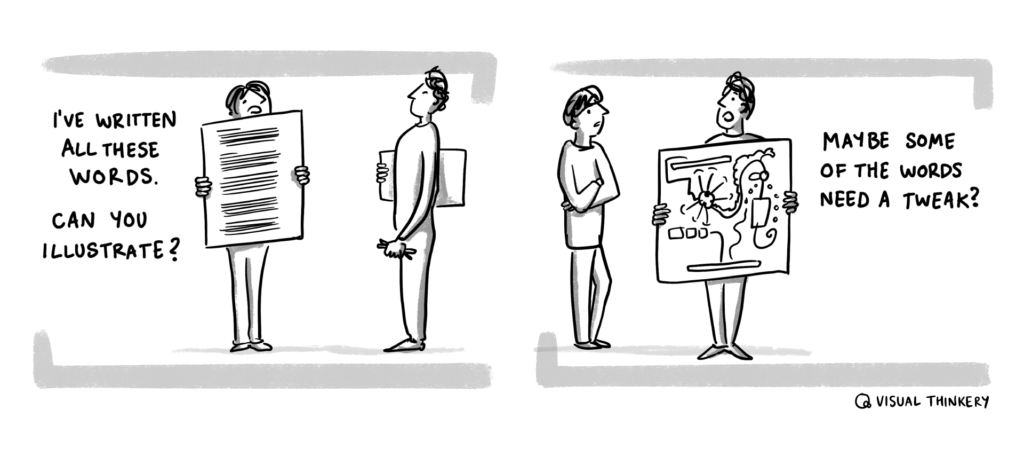
Ok, I have work to do and will start with pencil (actually used a liquid ink pen for the below, which made all mistakes stand out, very useful I felt) and paper as Bryan advised to create a storyboard and also draw the main characters so that they become a little bit more real now that we decided what creatures they will be. I will avoid colour at the beginning and too much details as Bryan suggested. And keep it simple and not overthink it…

On the 1st of January 2021, the first draft of the storyboard was ready. I did it in one go, thanks to the existing illustration notes and fresh energy that I felt that day on the first day of a new year. It definitely was a new start.
Bryan: It’s good to separate the story from the illustration as much as possible in the early stages. We need to illustrate the story just enough for others to visualise it. That’s why rough storyboards are so useful.


I will continue drawing, every day a little bit and continue as much as I can participating also in The January Challenge organised by 64 Million Artists at https://64millionartists.com/our-work/the-january-challenge/ to practise, practise, practise, focus my mind, develop my current skills further and also get some feedback.
Bryan’s words “what you see is not what everybody else sees” will stay with me and applies not just to illustration, I feel. Goes back to our reality is very different from somebody else’s…
My notebook is filling up with multiple sketches and all their imperfections. I can sense that my hand is becoming more steady and loosens up too and just goes for it. I can’t wait now to see how it will all come together.
Thank you Bryan.
References
Le Guin, U. K. (2016) Words are my matter. Writings about life and books 2000-2016. Easthampton, MA: Small Beer Press.
Post and Images by Chrissi Nerantzi and Bryan Mathers (Visual Thinkery)
